7 Amazing Churches in Rome You’ve Probably Never Heard Of

Rome proudly holds the nickname the Eternal City, which perfectly describes the treasures you will find within the city’s walls. Rome’s art, architecture, food, and culture all give us a fascinating view into the history of one of Europe’s most fascinating cities. Catholicism has played a major role in the development of this city from its cobblestone streets to its beautiful skyline. Rome is filled with little churches around every corner, but here is a guide to a few of Rome’s best-hidden gems!
1. Santa Maria Sopra Minerva
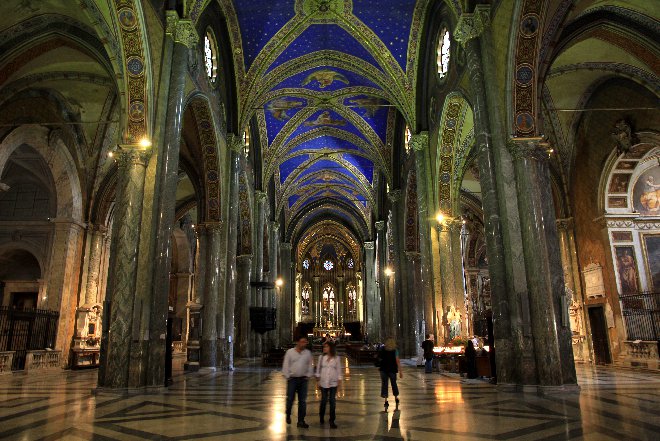
A block behind the Pantheon you’ll stumble upon one of the eight obelisks of Rome, a forefront to the church Santa Maria Sopra Minerva. Dedicated to the Roman Goddess Minerva, and housing the tomb of St. Catherine of Sienna, the church has long been a favorite worship place for women seeking guidance. Don’t let the simple façade of this church fool you because it houses art from some of the most renowned artists of the Renaissance, and is the only gothic style church in Rome. Gian Lorenzo Bernini’s Elephant and Obelisk stands directly in front of the church, Michelangelo’s Cristo della Minerva sits to the left of the altar, and there are frescoes by Filippino Lippi in the Carafa Chapel. This hidden gem is filled with magnificent artwork and can be a quick stop on your way to grab some gelato or pizza!
2. Sant’Ignazio
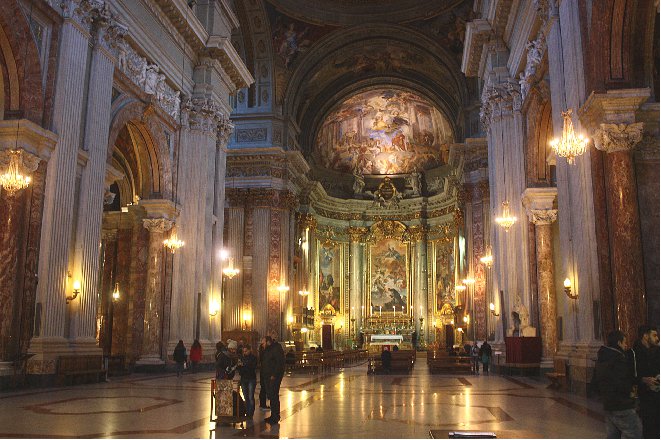
Baroque churches are sprinkled all across Rome, but perhaps one of the best examples of this style can be found at Sant’Ignazio. Dedicated to Saint Ignatius of Loyola, the founder of the Jesuits, this church was built in the 15th century and adorned with some of the most beautiful frescoes in Rome. The ceiling and dome are filled with these vibrant frescoes depicting the life of St. Ignatius. It’s hard to look away, and luckily there are often mirrors positioned on the floor so visitors can see the details on the intricate ceiling more easily. Take a walk around the side chapels of Sant’Ignazio and be blown away by the intricate marble and woodwork, stunning pillars, and the depth and detail found in the paintings and frescoes.
3. Santa Maria della Concezione dei Cappuccini
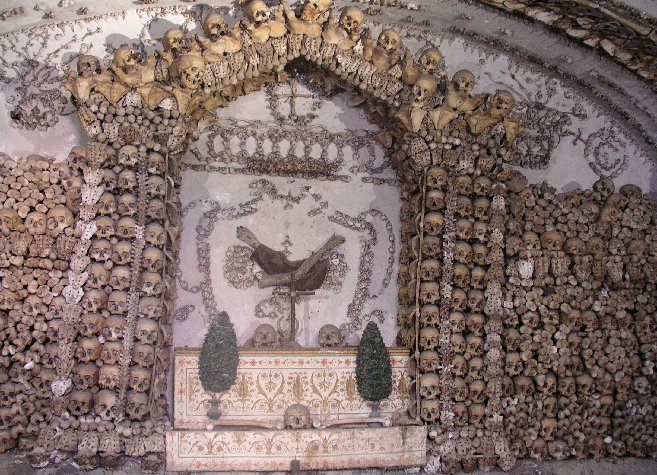
One of Rome’s more melancholy sites, Santa Maria della Concezione dei Cappuccini, is known by visitors all over the world as the Roman Bone Church. Established in 1626 by the Capuchin monks, Santa Maria original served as a simple chapel and monastery. Being one of few churches across Europe to have a full crypt below their chapel, they hold a total 3,700 monk and peasants remains spread throughout the crypts rooms. Before entering the crypt you make your way through the museum, which shares a detailed background on the Capuchin Order, the chapel, and the crypt. Upon entry to the crypt be sure to put all cameras and phones away because photography is prohibited until you exit the Gift Shop.
4. Santa Prassede
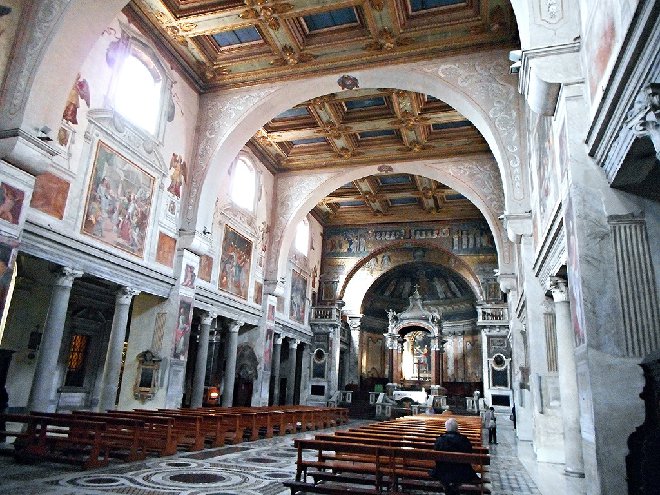
Steps away from one of Rome’s major basilicas, Santa Maria Maggiore, you will find the little chapel Santa Prassede. Dedicated to Saint Praxedes, this 9th-century church has some of the most beautiful and complete mosaics in Rome. The apse mosaic details Jesus ascending into heaven and the four authors of the Synoptic Gospels from the New Testament. A major highlight for many of Santa Prassede’s visitors is the complete mosaic in the Chapel of St. Zeno. In this side chapel, visitors will be delighted by the color, texture, and light that is reflected off the tesserae pieces in this very complete mosaic of Jesus. The detail in artwork, as well as the upkeep of this piece, is absolutely worth a quick visit to Santa Prassede!
5. Basilica of San Clemente al Laterano
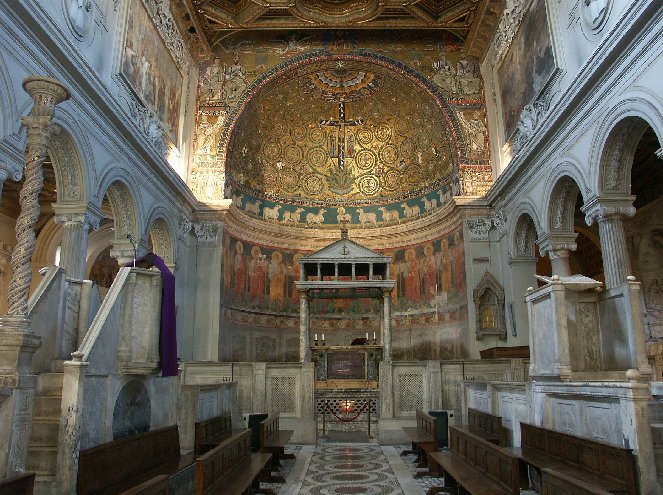
The depth of Rome’s history can be seen three stories down at the fascinating minor basilica of San Clemente. The building you see as you approach was built around 1100 and is run by the Irish Dominican Order. The church itself is filled with beautiful frescoes, mosaics, and marble work. Moving down a floor, you’ll find the remains of a 4th-century basilica filled with well-preserved medieval mosaics. Descending to the deepest level, discover the remains of an ancient Mithras temple and have the opportunity to walk through an ancient apartment building. San Clemente gives visitors a unique look into the layers of Roman history and the evolution of the modern city we see on the surface today.
6. Basilica di Santa Croce in Gerusalemme
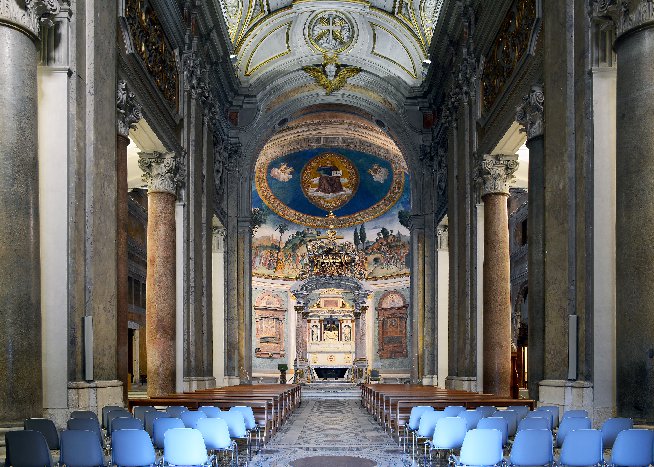
If you are looking to see religious relics outside of the Vatican look no further than the Basilica di Santa Croce in Gerusalemme! Saint Helena, the mother of Emperor Constantine, traveled to Jerusalem where she discovered a number of very important religious artifacts. These included pieces of the True Cross that Jesus was crucified on, thorns from the Crown of Thorns he wore upon his death, and a nail which secured Jesus to the cross. All of these items and more can be found in the back chapel of Santa Croce. The authenticity of these items is debated, but ultimately they serve as a visual representation for Catholics to better understand the Passions of the Cross.
7. Scala Sancta

What better way for Catholics to walk in Jesus’ footsteps than to walk where he last walked? Saint Helena was quite the scavenger and in addition to the relics mentioned earlier, she brought back the steps that led up to Pontius Pilot’s Palace. Pilgrims from all over the world come to the Scala to ascend in Jesus’ footsteps on their knees as a sign of worship. The marble steps were covered with wood planks to prevent destruction. Additionally, there are steps on the side for those who choose simply to admire the relics. Once at the top of the steps, visitors will find the Sancta Sanctorum, which was previously the Pope’s private chapel. Relics in this room include a piece of wood from the table of the Last Supper, and the skulls of St. Peter and St. Paul.
If you are in the neighborhood of one of these churches or minor basilicas I would highly recommend stopping in to take a quick look at the beauty around you. Rome’s history has been deeply influenced by the role of the Catholic Church and visiting churches like these will help you to broaden your understanding of Rome as a city, a culture, and a work of art.
What church would you add to the list? Let us know in the comments section below?











What a wonderful article on The lesser seen churches of Rome.
Thanks Linda! Glad you enjoyed it!
I love these lesser known churches!! St. Peter’s beautiful but overwhelming..this is the true history of catholic Rome!